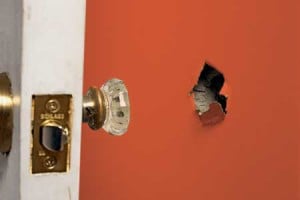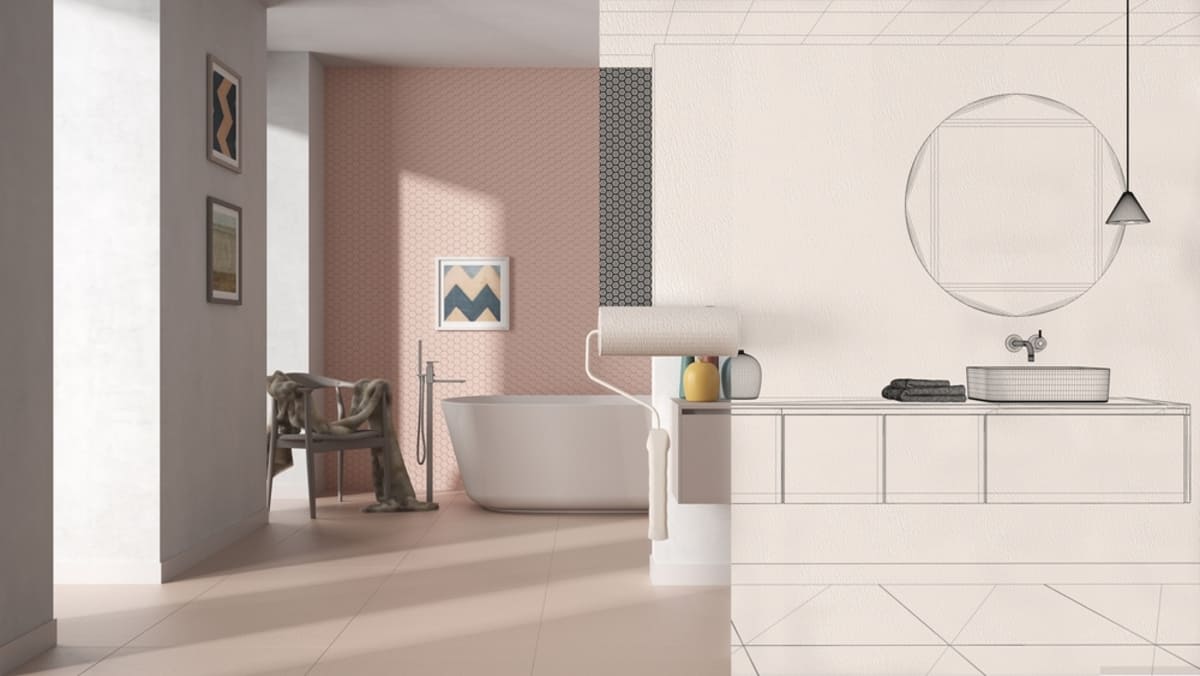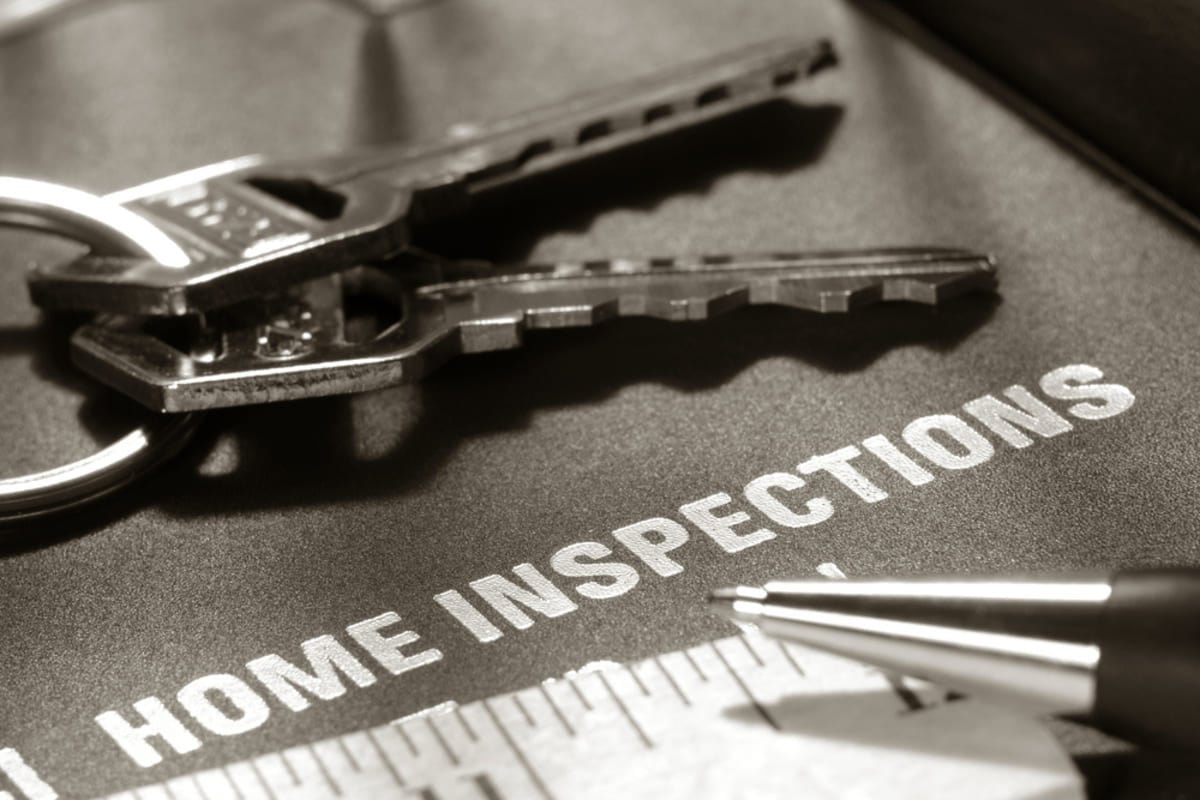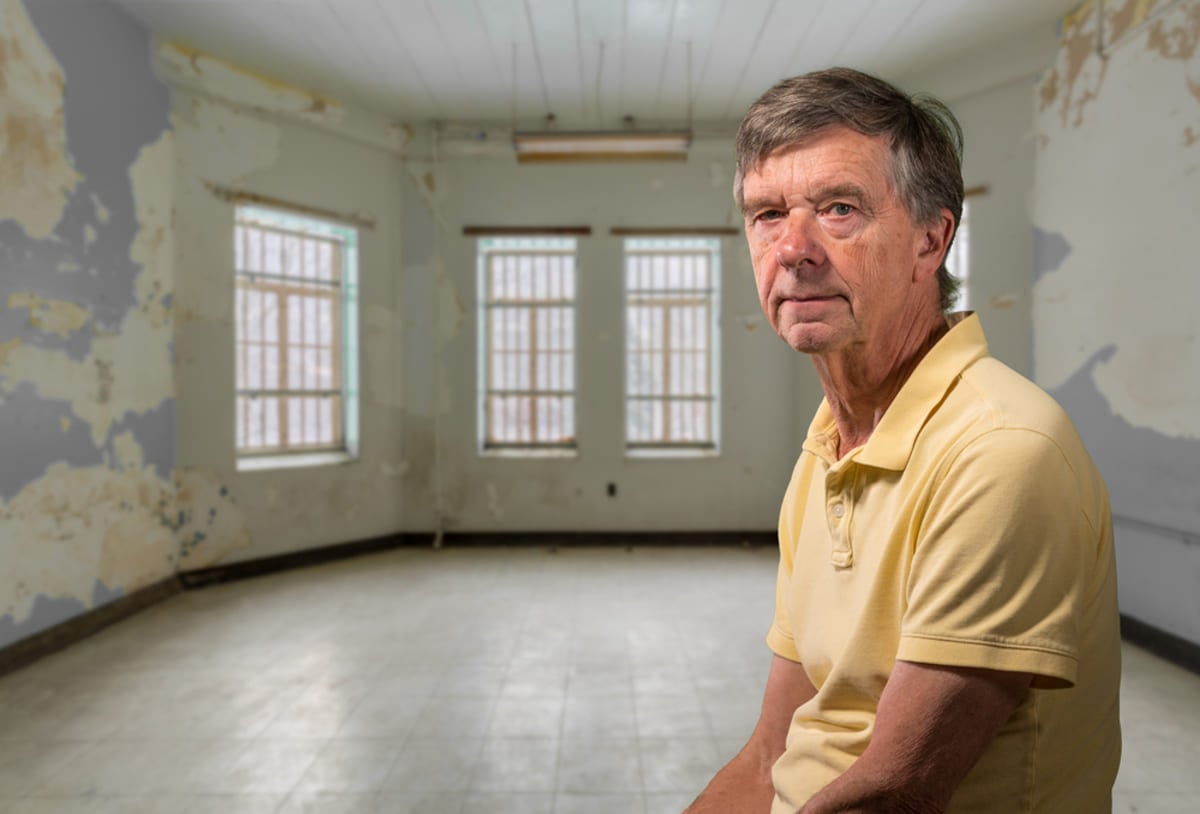Updated February 21, 2023
One of the most common damage-repair chores you might have to do when a tenant moves out of your Charleston rental property is to fix the holes that they negligently (or purposefully) put in the walls. Unfortunately, even when you thoroughly screen your renters, it seems like there are always holes in the walls.
Sometimes, the holes are accidental, caused by furniture and appliances during move-in or move-out. Other times, the holes are due to tenant irresponsibility. Perhaps you even ended up with dents and dings because somebody wasn't paying attention when one of their young children decided to play with a hammer!
Now, they've moved out, and the damage must be repaired during your make-ready process. Use this insight from our Charleston property management experts to repair a hole in the wall of your investment properties.

Wall Repair Is a Standard Part of the Make-Ready Process
To get your Charleston rental property into acceptable viewing condition for the next round of potential renters, the process must happen quickly to avoid losing more of your income to vacancy than is necessary.
When looking at holes in the walls, it is very little consolation that you can deduct the damage from the previous tenants' security deposit. Money or not, there is still the matter of actually performing the repair.
Many property owners find that it's just too expensive to hire a handyman for property maintenance as a small, independent, do-it-yourself investor. This makes acquiring skills for the rental property maintenance Charleston properties need essential for keeping your single-family homes and multi-family units in great shape.
You've likely already looked into how much it would cost to repair damaged walls in one rental property! If you haven't, prepare to shell out as much as $463! Just five years ago, that cost was only around $250—and expenses are only going to keep rising. That's money in your pocket that could be reinvested into your Charleston rental property.
If you've never actually repaired or patched drywall yourself, you might be thinking, 'How hard can it be?' In reality, patching a hole in sheetrock truly is a simple repair—if you know what you're doing. However, the flip side is that if you don't know what you're doing, this 'simple' repair can become a disaster.
Getting Started With Wall Repair
Most of the tools you will need to repair the walls in your Charleston rental property should already be in your DIY toolbox. However, you will probably still have to shop for the project supplies.
Because this is such a common repair and maintenance chore, buying a little more than you need this time is okay. If you operate rental properties for very long (or multiple properties), you'll need all these things again.
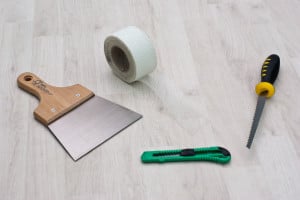
What to Include In Your Fully-Stocked, 'Drywall Repair Kit'
What do you need to repair a hole in the wall? Your drywall repair kit should include the following:
Invest in quality tools you can use whenever you need to repair damaged walls.
Other Miscellaneous Supplies
Depending on the size of the hole, you'll also need these supplies to fix the wall.
With your supplies, you're ready to think about safety next!
Safety Considerations for Fixing Holes in Walls of Homes for Rent in Charleston, SC
If you are not used to working with drywall, you might be surprised to find out how heavy just one sheet is. For example, a 4' x 8' piece of sheet rock weighs more than 54 pounds.
While that doesn't sound very heavy, it is enough to tweak your back if you're not careful when lifting it. It's also heavy enough to possibly hurt you if it falls over on top of you. Get help if you need it to manipulate the drywall.
You also have to consider that sanding a piece of drywall will result in airborne gypsum and silica dust, both of which can irritate your lungs. While this isn't medical advice, we advise you to wear a mask when sanding.
Project #1: Fill in Nail Holes
This very common cosmetic project only takes beginner-level skills, but it does require some attention to detail. If you try to work too haphazardly, the end result will show it—and the wall will look irregular.
Obviously, having your potential tenants see amateurish irregularities when they come to view your Charleston rental property is not something that you want happening.
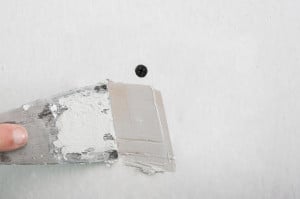
Step One
To fill a hole in the wall:
-
Fill in the nail holes with the drywall mud using a putty knife, spreading it as evenly as possible.
-
A good tip is to apply the mud in a cross-shaped pattern and apply two coats, letting the first coat dry before putting on the second.
-
This is necessary because when the first coat dries, it will shrink and leave a noticeable 'dent' in the wall.
Make sure that you scrape off any excess compound after the application. This will save you considerable time after the second coat dries and you are ready to sand.
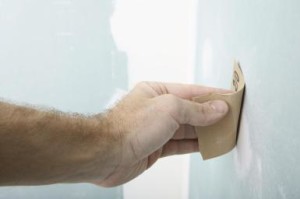
Step Two
When the second coat is dry, sand the entire surface where the compound was spread using a fine-grit sanding block or sandpaper. Then, when the surface is completely smooth, you will be ready to prime and paint the wall.
Project #2: Patch a Hole
Aside from small nail holes, property owners often see larger holes in walls after tenants move out of homes for rent in Charleston, SC. The skill level on this might be considered low-to-medium, meaning that if you are an experienced do-it-yourself investor, you should have no problem tackling this.
This is the type of repair job required when someone has knocked or punched a hole (or worse, holes) in the drywall of the home's interior.
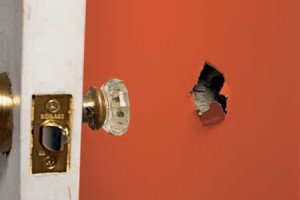
Step One
To make the patch that to fill the hole in your wall:
-
First, cut a piece of drywall slightly bigger than the existing hole.
-
Next, place the patch over the hole and use a pencil to trace its shape onto the wall (an important note: it must completely cover the entire hole).
-
Using the utility knife or the drywall saw, carefully cut out the damaged wall section according to the stencil you made from the patch.
IMPORTANT: Take extra care when you cut near wires or outlets. If the cavity between your interior walls is thin, make sure that you do not punch through the other side.
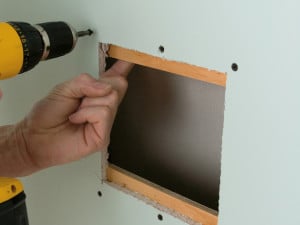
Step Two
Next, cut furring strips from the scrap board, making them slightly wider than the hole.
-
Place them on the inside of the hole and use the drill to attach them to the inside face of the wall.
-
Make sure about half of the board strips overlap into the opening (this is what you will attach your patch to).
If the board strips don't overlap enough, cut new strips.
Step Three
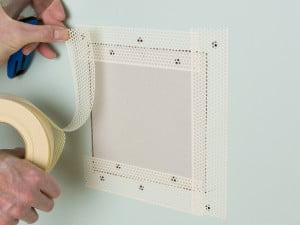
Insert the patch into the hole and attach it to the furring strips.
-
Some people like to attach the patch with drywall mud, and some people like to use screws. In actuality, there is no reason why you can't use both.
-
Apply mesh tape along the seams between the patch and the hole. Mesh tape has adhesive on the back, making it easier to position.
IMPORTANT: Make sure that there are no large gaps around the patch. Because you used the patch as a stencil, that shouldn't be a problem.
Step Four
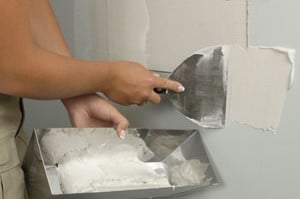
Apply the drywall mud, filling out any air pockets in the mesh tape.
-
You may have to apply more than one coat to 'feather' the edges for a smooth transition.
-
Typically, you will start with your largest putty knife and transition to the smaller knives for the fine touches.
-
After the compound dries, you're ready to sand the area smoothly. When the patched area is virtually indistinguishable to the touch, you can apply primer and repaint the wall.
The result should be a smooth wall showing no sign of the hole there before your repair job!
Charleston Property Management Experts Handle Repairs and Maintenance
Keeping up with the maintenance and repairs that always seem to pop up in a Charleston rental property may seem like a never-ending battle. In a very real way—it is.
Becoming proficient in responding to simple maintenance requests and repair tasks like this will make your job much easier and save you thousands of dollars in contractor fees over the years. It will also bolster the value of your investment property.
If you're wondering how to find a property manager that delivers the best maintenance services in Charleston, start with Charleston Property Company! We start by running a Free Rental Analysis on your rental homes to see if you're earning all you could be based on the best monthly rent amount. Then, we make sure your rental properties stay in excellent condition for every renter.
Let our experts in Charleston property management run the numbers to ensure you haven't been underpricing your investment property and losing out on valuable income! Click to get your Free Rental Analysis.

